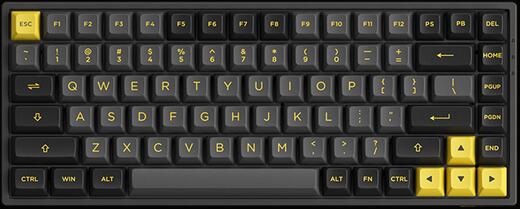After Synchrodyne and Shapeshifter, I had planned to dig into Akemie’s Castle next. My issue with it has always been:
- It’s big. Not too big for what it does, but big enough that I could fit plenty of other options in there. (Or put another way: FOMO.)
- It’s very much an FM specialist, and I have lots of other hardware and software that can do FM extremely well.
Every time I patch it, I love what I hear, and I keep it around. I even made a whole album to prove it to myself… but it seems I have to keep proving it.
If I just compare 2-op FM on it vs. the FM in other modules or in software, it’s a little quirky but not impressive:
- Most notably, the amplitude for each operator is quantized to a few levels so modulating it is steppy rather than smoothed — something I can imitate in other modules if I choose to.
- There’s a certain fizzy/dusty quality to it which is probably mostly due to the resolution of the phase accumulator, but possibly also the sample rate, resolution of the sine lookup table, etc. To a lesser extent that’s also audible in other modules, except Shapeshifter since it’s such a high-specced beast in that department. I can hear it in the SynPrezFM app for Android too, and it’s more obvious at lower pitches.
- The maximum depth of modulation is pretty darned strong.
- The frequency ratios are locked to multiples of a common frequency, so you can’t do the slight detuning that I like, nor super-clangorous stuff, or separate sequencing of carrier and modulator. Which is fine, because it allows easy sequencing/modulation of the multiplier, and I have plenty of other opportunities elsewhere for freely tuned ratios.
But Akemie’s Castle has 4 operators, not 2. That’s much less common in Eurorack, though I suppose I could patch it with Just Friends and Shapeshifter in a pinch. It’s considerably easier in software, and I feel like maybe its closest competitor in my setup is Bitwig FM4, or a Grid patch. (Plogue OPS7 is a lovely DX7 emulation, but you can’t just hold a droning note and modulate the operator amplitudes, which is a shame IMHO.) So I guess that’s what I need to compare it to.
[UPDATE]: no, FM4 sounds nothing at all like it.
AC’s operator levels are never exactly 0, and that’s more obvious when using the 4-op serial algorithm. How you set the multipliers and waves matters, and that not-quite-subtle influence coloring the output honestly just adds to the module’s charm.
AC is also duophonic — the A and B outputs can have separate pitches but share a common set of operator controls. B also has a chord mode. There are all kinds of ways to combine the two outputs, especially with the more “parallel” algorithms and different multiplier settings, for really thick chords and clusters, super nice stereo or mid-side sound, or using them with different envelopes/filters/etc.
I’m not sure if I’m going to write up Akemie’s Castle any beyond what’s in this post. Its complexity is more of an intuitive thing than Synchrodyne’s eccentricities or Shapeshifter’s many forms. But I guess I’ll do a quick AC vs. FM4 test, even though I expect I’m going to want to keep AC.
This phase of studying one module at a time in depth is about a month old now, and honestly it feels kind of weird. I’ll think about another module or plugin or the BrutePest setup and catch myself wondering why I haven’t used it recently.
I also feel a little overwhelmed, like I have too much stuff and it’s too powerful and I’m staring into the abyss. I think that’s anxiety talking. To compare synth gear is to compare different infinite sets, and how they overlap both in a general sense and in the specifics of their possible sounds. In the end you just have to pick something that appeals to you and run with it.
And I also wonder how this kind of study is going to apply to actual music-making. I went through the process with Beads, wrote up a bunch of patch ideas and then kept to my old, comfortable, limited habits with it anyway. Going back over those notes and revisiting those patches to see if that shakes something loose is on my list.
Honestly though, what matters is that the gear serves my musical needs, not that I’m taking full advantage of all the possibilities each piece of gear can offer me. Beads’ usefulness to me was never in doubt. Nor was Shapeshifter’s, but I thought its indispensability might be. Synchrodyne’s usefulness was in doubt, but now that I understand its usage and character better, it’s now more a question of will I than can I.
I kind of want to go back to music making again, but I feel there’s plenty more I could learn about my hardware, and also several plugins. I don’t know if I want to plow forward with the studying or return to it at another time.
To be honest I haven’t gotten in a lot of bass practice, either. I kind of feel like, not recording means not feeling the limits of my skill so much, therefore I’m not as motivated to practice. Maybe I need to dedicate some time specifically to bass practice, not try to split it between module studies and bass practice.
My parents got me a Rokr 3D wooden puzzle for Christmas — a steam locomotive model, with a wind-up spring and lots of wooden gears. It’s all laser-cut plywood (plus the metal spring coil and a few rods) and IKEA-like assembly instructions. Everything fits together without glue or additional tools. I finally started working on it over the weekend and am most of the way done. Building it has been enjoyable minus a couple of slightly frustrating moments — the difficulty is rated 5/6 after all. I don’t know what I’m going to do with a somewhat delicate wind-up model train when it’s done, though.
I see they also make marble runs, music boxes, an orrery, clocks, a gramophone, etc. I may have to keep those in mind when considering what I can put on my wish list.


